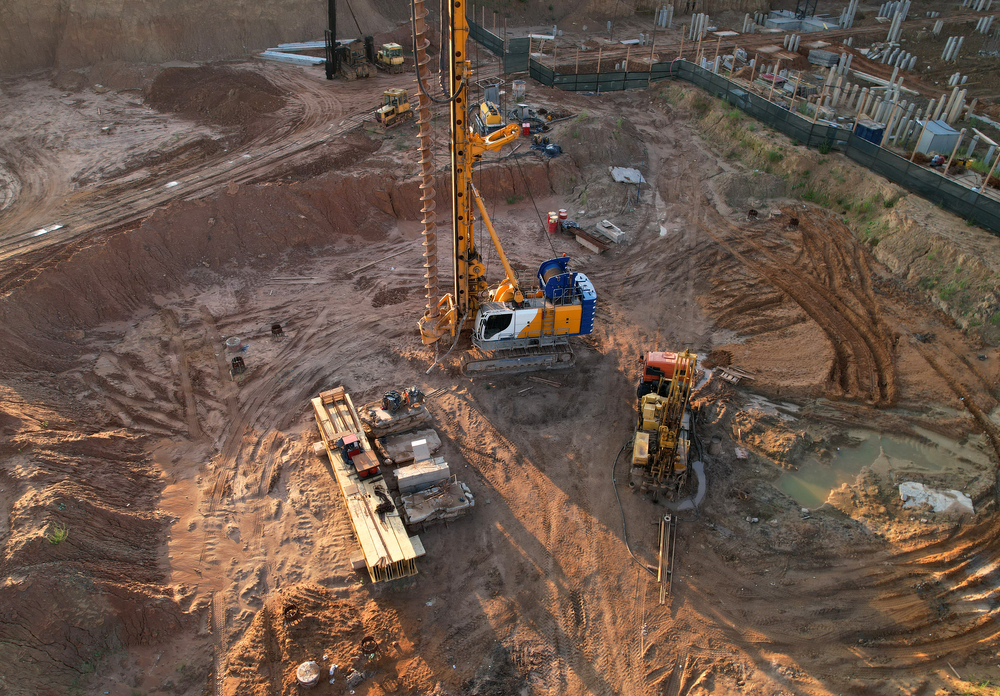The 5-Minute Rule for Geotheta
The 5-Minute Rule for Geotheta
Blog Article
Geotheta for Beginners
Table of ContentsSome Known Details About Geotheta Not known Incorrect Statements About Geotheta The Geotheta StatementsThe Greatest Guide To GeothetaNot known Facts About Geotheta

They conduct website examinations, accumulate samples, carry out research laboratory examinations, and evaluate information to assess the suitability of the ground for building jobs - Geo Tech Engineer. Based upon their findings, geotechnical engineers offer referrals for structure design, incline stability, retaining frameworks, and mitigation of geotechnical risks. They team up with other specialists, such as architects, structural designers, and building and construction groups, to make sure that geotechnical factors to consider are integrated into the general job style and application
By examining the habits and properties of dirt and rock, they can identify prospective geotechnical threats such as landslides, dirt settlement, or slope instability. Their expertise helps avoid failures or mishaps that might threaten lives and property. Below are some thorough duties and duties of a geotechnical designer: Site Investigation: Geotechnical engineers conduct website examinations to gather information on subsurface problems.
They translate the information to understand the residential properties and actions of the soil and rock, including their strength, permeability, compaction features, and groundwater problems. Geotechnical Analysis and Style: Geotechnical engineers assess the data collected throughout site investigations to evaluate the security and suitability of the website for construction projects. They do geotechnical estimations and modeling to review aspects such as bearing capability, settlement, incline security, side earth pressures, and groundwater circulation.
Get This Report about Geotheta
Structure Layout: Geotechnical engineers play a crucial duty in making foundations that can securely support the intended structure. They assess the dirt conditions and lots demands to identify the ideal structure kind, such as superficial foundations (e.g., grounds), deep foundations (e.g (https://geotheta.edublogs.org/2024/08/02/unlocking-the-world-of-geotechnical-engineers-with-geotheta/)., stacks), or specialized methods like soil improvement. They consider factors such as settlement restrictions, birthing capacity, and soil-structure communication to develop optimal foundation styles
They review construction plans, display site activities, and perform field inspections to validate that the layout referrals are complied with. If unexpected geotechnical concerns emerge, they examine the situation and give referrals for remediation or changes to the style. Risk Analysis and Mitigation: Geotechnical designers examine geotechnical risks and dangers connected with the task website, such as landslides, liquefaction, or soil disintegration.

Partnership and Communication: Geotechnical engineers work very closely with other specialists associated with a project, such as engineers, structural designers, and construction groups. Effective communication and cooperation are vital to integrate geotechnical considerations right into the overall task style and building YOURURL.com procedure. Geotechnical engineers give technical experience, response questions, and guarantee that geotechnical needs are met.
Some Known Questions About Geotheta.
Right here are some kinds of geotechnical engineers: Structure Designer: Structure designers specialize in developing and examining structures for frameworks. They analyze the soil conditions, lots needs, and website qualities to figure out one of the most ideal structure type and layout, such as superficial foundations, deep structures, or specialized techniques like pile foundations.
They evaluate the factors influencing incline security, such as dirt buildings, groundwater conditions, and slope geometry, and develop techniques to stop slope failings and reduce risks. Earthquake Engineer: Earthquake engineers specialize in examining and creating structures to withstand seismic pressures. They analyze the seismic hazard of a site, evaluate dirt liquefaction possibility, and establish seismic style requirements to make sure the security and strength of structures throughout quakes.
They execute area testing, collect examples, and assess the gathered information to identify the soil residential or commercial properties, geologic developments, and groundwater conditions at a site. Geotechnical Instrumentation Engineer: Geotechnical instrumentation engineers concentrate on tracking and measuring the habits of soil, rock, and frameworks. They mount and preserve instrumentation systems that keep track of variables such as dirt settlement, groundwater degrees, slope activities, and architectural displacements to analyze efficiency and provide very early warnings of potential issues.
5 Simple Techniques For Geotheta
They carry out examinations such as triaxial examinations, debt consolidation examinations, direct shear tests, and leaks in the structure tests to gather data for geotechnical evaluation and style. Geosynthetics Designer: Geosynthetics engineers focus on the design and application of geosynthetic products, such as geotextiles, geogrids, and geomembranes. They use these materials to enhance dirt security, reinforce slopes, supply water drainage services, and control disintegration.
They have a tendency to be investigatory people, which suggests they're intellectual, introspective, and inquisitive. They are curious, systematic, logical, logical, and sensible. Some of them are also social, implying they're kind, generous, cooperative, client, caring, practical, understanding, skillful, and friendly - Consulting Engineer.
In the office environment, geotechnical designers utilize specialized software application tools to perform calculations, develop layouts, and examine data. They prepare reports, testimonial task specifications, connect with customers and staff member, and coordinate project activities. The office setting supplies a favorable setting for study, evaluation, and partnership with other experts associated with the task.
The Only Guide to Geotheta
They often go to task websites to carry out site investigations, evaluate geotechnical conditions, and collect information for analysis. These visits involve traveling to different locations, in some cases in remote or challenging surfaces. Geotechnical designers might perform soil sampling, conduct examinations, and screen construction tasks to make sure that the geotechnical elements of the job are being implemented correctly.
Geotechnical designers also function in specialized geotechnical research laboratories. Geotechnical laboratory engineers work extensively in these settings, handling screening tools, operating tools, and tape-recording data.
Report this page